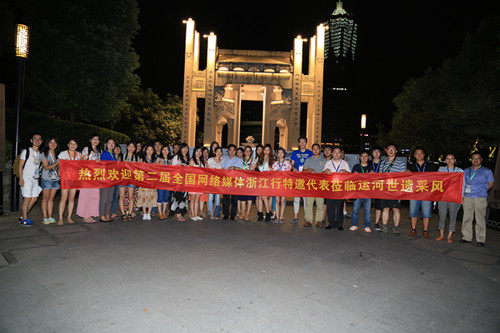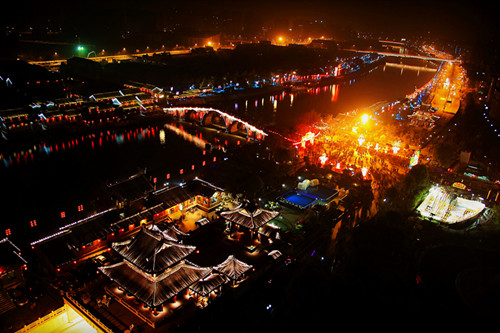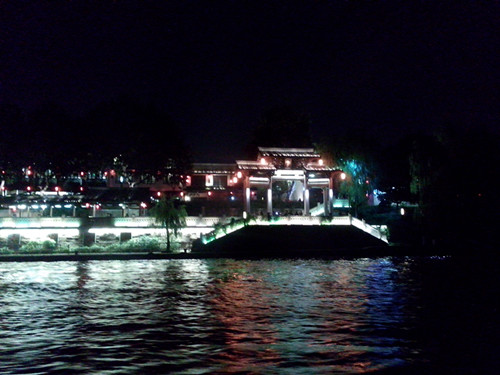Getting close to the Grand Canal in Hangzhou
"Poetry and painting like Jiangnan (south of the Yangtze River), water charm in Zhejiang"
– the national network media water tour of Zhejiang arrived at its first destination on the night of Aug 24, the Grand Canal in Hangzhou, capital city of Zhejiang province.
Zhejiang in East China is famous for its waters. Mo matter if it is the world renowned Grand Canal, the powerful Qiantang River, the tranquil West Lake, or a gentle watertown, all have a unique beauty.
 |
|
Editors, journalists, and photographers from major Internet media nationwide take a group photo at Wulin Dock during their tour of the Hangzhou part of the Beijing-Hangzhou Grand Canal on Aug 24, 2014.[Photo/ Zhao Naicheng] |
The media tour aims to explore the profound beauty of Zhejiang and inspire people's enthusiasm to participate in the eco-environment protection of its waters.
Editors, journalists, and photographers from more than 50 network media nationwide started on a boat from Wulin dock, passing scenic spots such as Xinyifang and Gongchen Bridge. The group enjoyed the charming night scene of the world heritage spot.
 |
|
Photo shows the night scene of the Grand Canal in Hangzhou, East China's Zhejiang province. [Photo/ Zhao Naicheng] |
The Beijing-Hangzhou Grand Canal was rated as one of the world heritages at the 38th World Heritage Convention on June 22, 2014. It is the oldest and longest man-made waterway, being 1,794 kilometers long. It was constructed back in the late Spring and Autumn Period (770-476BC) and so it has a history of about 2,500 years.
Dave Ballinger, chairman of Inland Waterways International (IWI), an international organization founded in 1994, which aims to increase understanding of the importance of inland waterways for commercial, leisure and historical value, said when visiting the Grand Canal in China that the canal is unique as it not only retains its old looks, but still has a shipping function.
The Hangzhou section of the Grand Canal starts from Tangqi town in Yuhang district in the north and ends in the Qiantang River to the south. It runs across four urban districts in the city of Hangzhou, Yuhang, Gongshu, Xiacheng and Jianggan.
 |
|
Photo shows Xiangji Temple on the bank of the Grand Canal in Hangzhou. [Photo/ Zhang Qiong] |
Starting from 2002, the Hangzhou municipal government officially initiated a renovation and protective development project oriented to the canal in the city, achieving an overall improvement of water quality, bridges, old streets and buildings along the canal.
By now, a scenic belt has been formed along the banks of the canal in Hangzhou, featuring a natural ecological landscape and cultural attractions such as historical streets, cultural parks, museums and temples.
The successful application as a world heritage means the beginning of a higher level of protection. Cities along the canal have jointly published Hangzhou Manifesto, which is a consensus on the protection and development of the canal in the post-world-heritage era.
Gao Xiaohui, deputy secretary of Hangzhou Canal Group Party Committee said that resource adjustments for the protection of Beijing-Hangzhou Grand Canal are as important as the protection itself. What really matters is to allow the canal to bring a better quality of life to people living along it.















